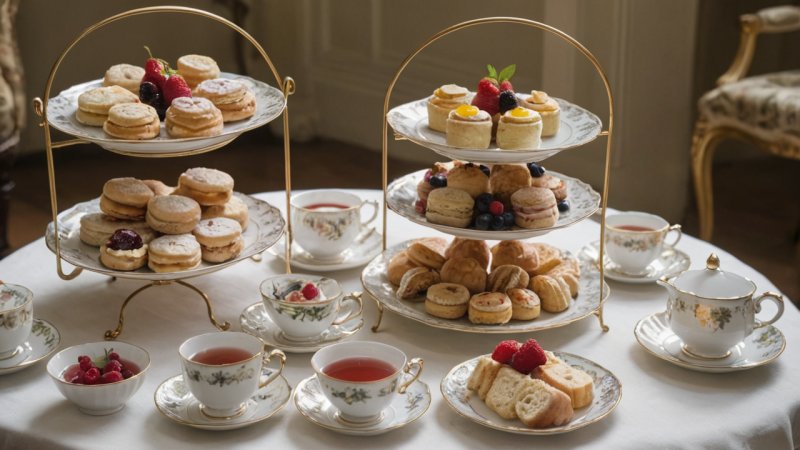1. The Origins of Afternoon Tea
Afternoon tea originated in the early 19th century when Anna, the Duchess of Bedford, started the tradition of enjoying a light meal in the afternoon to bridge the gap between lunch and dinner. This practice quickly gained popularity among the upper class and eventually became a cherished British tradition.
2. Types of Afternoon Tea
There are several variations of afternoon tea, including:
- Traditional Afternoon Tea: This classic version includes a selection of finger sandwiches, scones with clotted cream and jam, and a variety of pastries.
- High Tea: Often more substantial than afternoon tea, this version includes heartier fare like meat pies and other savory dishes, typically enjoyed in the early evening.
- Cream Tea: A simpler option focusing on scones served with cream and jam, accompanied by tea.
3. Essential Components
The quintessential afternoon tea experience consists of several key elements:
- Tea: A variety of teas can be served, with black teas like Earl Grey and Assam being the most popular choices.
- Sandwiches: Finger sandwiches filled with cucumber, smoked salmon, egg, and other savory ingredients.
- Scones: Warm, freshly baked scones that are flaky and served with clotted cream and fruit preserves.
- Pastries: A selection of delicate cakes, tarts, and pastries to entice the sweet tooth.
4. Perfect Locations for Afternoon Tea
While afternoon tea can be enjoyed in many places, here are some of the most iconic locations:
- The Ritz, London: This luxurious venue is famous for its opulent surroundings and impeccable service.
- Claridge's, London: A hallmark of elegance, Claridge's serves a traditional afternoon tea in a stunning Art Deco setting.
- Castle Leslie, Ireland: Enjoy afternoon tea in a charming castle with beautiful grounds, offering a unique experience amidst history.
- The Savoy, London: Known for its rich history, The Savoy provides a classic afternoon tea experience with live music.
- Fortnum & Mason, London: This iconic department store serves a delightful afternoon tea in an elegant setting, complete with a selection of teas.
5. Tips for Enjoying Afternoon Tea
To make the most of your afternoon tea experience, consider these tips:
- Reservations: Make a reservation in advance, especially at popular venues, to ensure you secure a spot.
- Dress Code: Many establishments have a dress code; check ahead to ensure you are appropriately attired.
- Timing: Afternoon tea is traditionally served between 3 PM and 5 PM, so plan your visit accordingly.
- Pairing: Don’t hesitate to ask for recommendations on tea pairings with your food selections.
- Share: If you’re dining with friends, consider sharing different items to sample a wider variety of treats.
6. Unique Experiences
For those looking to add a twist to their afternoon tea, explore these unique experiences:
- Themed Afternoon Teas: Many venues host themed teas, such as Alice in Wonderland or seasonal celebrations, adding a fun and whimsical touch.
- Outdoor Afternoon Tea: Some locations offer outdoor seating for a relaxing experience in beautiful garden settings.
- Interactive Teas: Participate in workshops where you can learn about tea blending or baking scones.
7. Conclusion
The tradition of afternoon tea is more than just a meal; it is an experience steeped in history and culture. By understanding its origins, types, and essential components, as well as knowing where to go and how to enjoy it, you can truly appreciate this delightful British culinary experience. Whether you choose a traditional venue or seek a unique twist, afternoon tea promises a memorable and elegant outing.






